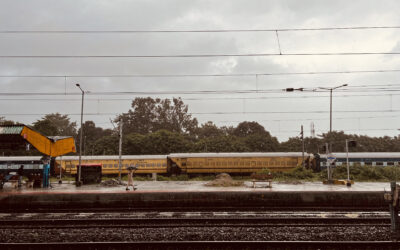Domestication Dairy and plastic: Uneasy Partnership
In our everyday lives, we often overlook the rich histories of the animals that coexist with us. The evolutionary link between dogs and wolves is widely recognized,but the lesser-known history of cattle domestication remains unknown to many. DNA evidence points to a common ancestor with wild oxen/ aurochs, the precise details of when and where domestication occurred, as well as its purposes remains unclear.
Early humans likely valued cattle for their multifaceted role: ploughing fields, providing transportation, and offering meat, milk, and hides. The exact timeline of when the milking process started remains uncertain, but its nutritional benefits likely spurred its adoption after domestication. However, the transformation of cows into “milk-producing machines” occurred during the industrial revolution.
The very act of milking highlights the complex relationship between humans and cattle. On having a casual discussion with a dairy farmer to know more about process of milking, the farmer shared, “If we don’t milk the cow, it would harm the cow’s health,”. This represents a common misconception. By nature, cows lactate to nourish their calves just like humans. Un-milked cows may experience discomfort due to udder pressure, but the calf’s natural consumption will regulate milk production of the cow.
Industrialization and the Rise of Unethical Practices
Large-scale cattle farming, encompassing both dairy and beef production, boomed alongside industrialization. This demand for efficiency led to the partial replacement of natural reproduction with artificial insemination. Furthermore, some resort to the unethical practice of injecting cows with Oxycontin, a hormone that increases milk production by 3%. While some argue this practice has no adverse effects, others point to potential health risks for the cattle. Thus the potential risks let to the ban on use of Oxycontin under Cruelty to Animals Act, 1960,
The Dairy and Plastic Paradox: Convenience at a Cost
Our impact on cattle extends beyond milking practices. One of the most significant threats to their health, and the environment as a whole, is plastic pollution. The widespread use of plastic, often for mere convenience, leads to improper disposal, contaminating soil and waterways. While some towns and cities have collection systems, these are often unreliable, leaving plastic waste readily available to foraging animals. Mistaken for food, these plastic ingestion causes illness and death in cattle.

Relationship of Dairy and plastic : Khond Tribe
My experiences working with the Khond tribe offers a unique perspective on the shared relationship between human and animals. Fundamentally, they are nature worshipers who consider the land, water and their hills as sacred with the festivals revolving around harvesting. Despite facing malnutrition, they abstain from consuming cow’s milk, and on asking why, the community member shared:
We believe that the cattle produces milk for its calf and so we don’t consume it,
What will the calf consume if we take away that milk?
This highlights their belief in the rightful ownership of the milk by the calves. This ethical perspective prompts reflection on our own consumption patterns. While saving the cow in one way, they still practice cattle slaughter, showcasing the dominance which is a typical human behavior. We have evolved in such a way to co-exist with other species, not because we value them but because we want something out of them, highlighting the complexities of human-animal relationships. This makes me think whether we’ll share the resources if they are of no use?
The problem in the hills
The Khond tribe also faces the challenge of plastic pollution. Single-use plastics have reached their sacred hills, threatening not only the land but also the ecosystem. Their response often mirrors our own, the typical selfless humans; throwing waste away, burning it, or simply abandoning it. Having six senses, shouldn’t it be our responsibility to protect the ecosystem?
Intervention for Change
Ignoring this issue is not an option. We need long-term solutions, not just temporary interventions. An article titled “Reducing Plastic Pollution Requires Local Remedies“ Project Syndicate emphasizes the importance of tailoring solutions to specific contexts. While recycling existing plastics was once considered a breakthrough, it’s time to move beyond “don’t stop production, recycle instead.”
A Call to Action: Curbing Production and Embracing Alternatives
Here are some potential solutions to consider, supported by data:
- Waste Segregation at Source: Separating organic and inorganic waste prevents contamination and facilitates proper disposal.
- Reduced Contamination: When organic and inorganic waste are mixed, it becomes difficult to separate them later. Organic waste can decompose and contaminate recyclable materials like paper, plastic, and metal, rendering them unusable. Waste segregation at source keeps these materials clean, maximising the potential for proper recycling.
- Economic opportunities: Composted organic waste can be sold as fertilizer, and recycled materials can be used to manufacture new products. This creates a circular economy, reducing reliance on virgin resources and creating jobs in the waste management sector.
- Curb Single-Use Plastic Production: According to a 2023 report by the Central Pollution Control Board (CPCB), India generates over 3.3 million tonnes of plastic waste annually. Curbing production, not just focusing on recycling, is essential.
- Reduces Overall Plastic Waste: The most effective way to minimize plastic pollution is to produce less of it in the first place. Curbing production directly addresses the root cause of the problem.
- Conserves Resources: Plastic production relies on fossil fuels, a non-renewable resource. Reducing production lowers our dependence on these resources and reduces associated environmental impacts.
- Stimulates Innovation: Focusing on reducing plastic use encourages innovation in packaging materials. This will directly lead to the development of more sustainable alternatives.
- Refill Stations: Encouraging refill stations for water and other products can significantly reduce single-use plastic bottles and wraps. Refer to this site.
- Aluminium Alternatives: While not perfect, aluminium offers a more sustainable option compared to single-use as the aluminium wraps and covers can be recycled and reused much better than the plastics.
This study by Franklin Associates compares the environmental impact of different beverage packaging materials, including aluminium cans, plastic bottles, and glass bottles. The study found that aluminium cans have a lower overall environmental impact than plastic bottles across several key metrics, including energy use, greenhouse gas emissions, and water use.
There is no guarantee that these solutions will be a hundred percent effective. but if we don’t act now it would be too late and we will be left with only regrets. Regrets not by us but by the upcoming generations. Lets not forget there is no Planet B




0 Comments